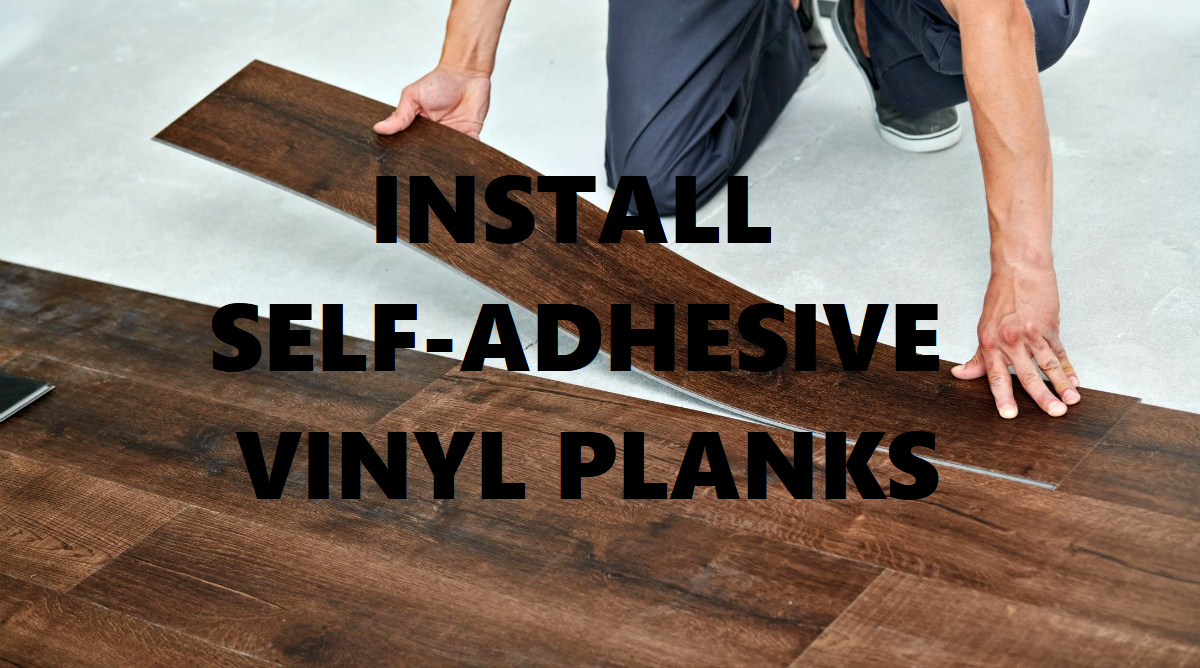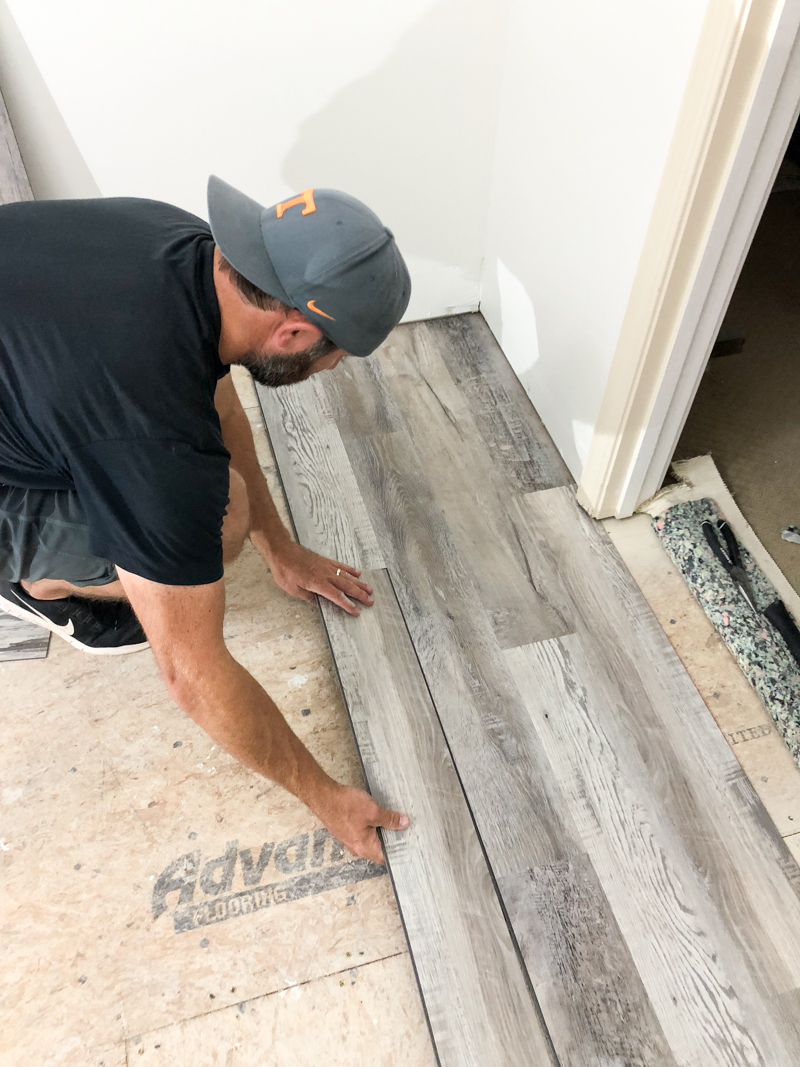Have you fallen in love with the look of vinyl flooring, but your existing laminate floor feels stubbornly stuck in place? You’re not alone! Many homeowners find themselves facing this dilemma, wondering if they can simply layer new flooring over the old. The answer isn’t a simple yes or no. It depends on a few key factors that we’ll explore in detail.

Image: mromavolley.com
Layering vinyl flooring over laminate is a possible solution, but it’s not always the ideal one. There are considerations regarding floor height, existing subfloor, and overall project goals. While it may seem like a quick and easy fix, understanding the potential challenges and benefits is essential before embarking on your DIY flooring project.
Understanding the Basics
Laminate Flooring: A Durable Choice
Laminate flooring is a popular choice due to its durability, affordability, and wide range of styles. It replicates the look of hardwood, tile, or stone, offering a stylish and functional solution for various rooms. The core of laminate flooring is a high-density fiberboard core that is covered with a decorative layer and a clear wear layer that protects the design.
Vinyl Flooring: Versatility and Comfort
Vinyl flooring has come a long way from the outdated linoleum of the past. Today’s vinyl boasts incredible realism, mimicking natural materials like wood, stone, and even concrete. Its durability, water resistance, and ease of maintenance make it suitable for kitchens, bathrooms, and high-traffic areas. Vinyl flooring also tends to be softer and more comfortable underfoot than laminate.

Image: dragon-upd.com
The Pros and Cons of Layering
The Potential Advantages
Layering vinyl flooring over laminate can be appealing for several reasons:
- Cost-Effective: Layering avoids the need for complete removal of existing laminate, saving on labor and material costs.
- Time-Saving: Installing new flooring over existing surfaces can be quicker than removing the old floor, making it an attractive option for busy homeowners.
- Minimal Disruption: Layering minimizes the mess and disruption associated with a full flooring replacement.
The Potential Disadvantages
However, layering isn’t without potential drawbacks:
- Increased Floor Height: Adding another layer of flooring can increase floor height, potentially affecting door clearances and transition thresholds.
- Uneven Surfaces: Existing laminate may not be perfectly smooth, leading to unevenness or imperfections in the new vinyl flooring.
- Subfloor Considerations: The existing subfloor should be structurally sound to support the added weight and potential movement of the layered floors.
- Limited Underlayment Options: Layering often restricts the use of thick underlayment, which can reduce comfort and noise insulation.
Factors to Consider Before Layering
1. Existing Floor Condition
Assess the condition of your existing laminate flooring. It should be smooth, free from loose planks, and secured to the subfloor. Any significant imperfections or damage should be addressed before layering a new floor.
2. Floor Height and Transitions
Measure the total floor height after layering to ensure it won’t affect door clearances or create tripping hazards. Consider how you will transition the new vinyl flooring to other floor coverings in adjacent rooms.
3. Subfloor Integrity
A solid subfloor is crucial for any flooring installation, especially when layering. Ensure the subfloor is level, free from rot or moisture damage, and suitable for supporting the weight of both laminate and vinyl flooring.
Types of Vinyl Flooring and Layering Considerations
1. Glue-Down Vinyl Tiles
Glue-down vinyl tiles are a popular choice for layering due to their low profile and ability to adhere well to a smooth surface. However, ensure the laminate surface is clean, dry, and completely smooth before applying the adhesive.
2. Click-Lock Vinyl Tiles
Click-lock vinyl tiles offer a floating installation method, snapping together without the need for glue. This option can be more forgiving with less-than-perfect subfloors, but it’s crucial to ensure the existing laminate is securely fixed. A thin underlayment can sometimes be used with click-lock vinyl, but check with the manufacturer’s guidelines.
3. Luxury Vinyl Plank (LVP)
Luxury vinyl planks (LVP) are becoming increasingly popular for their realistic wood-look appearance and ease of installation. LVP typically involves a click-lock installation, although some products require glue. As with other vinyl flooring types, ensure the existing laminate is secure and smooth before installation.
Installation Tips for Layering Vinyl Over Laminate
1. Preparation is Key
Thoroughly clean the existing laminate floor, removing any dust, debris, or adhesive residue. Ensure the laminate is completely dry and free from any moisture before proceeding. Consider using a leveling compound to address any imperfections or unevenness in the laminate surface.
2. Choose the Right Underlayment (If Possible)
If you can use underlayment, opt for a thin foam or felt underlay designed for vinyl flooring. This will help cushion the new floor and provide better insulation, but it’s essential to check the manufacturer’s recommendations for thickness limitations and compatibility with layering.
3. Install with Precision
Follow the manufacturer’s guidelines carefully for installing the chosen vinyl flooring. Ensure consistent spacing and proper locking mechanisms, especially with click-lock vinyl. Pay close attention to transitions and ensure that the new flooring is aligned with existing baseboards and moldings.
Alternative to Layering: Removing Existing Laminate
While layering can be tempting, removing existing laminate and installing new vinyl flooring directly on the subfloor might be the best option in some cases. Here’s why:
- Greater Flexibility: This allows for using a thicker underlayment, improving comfort and noise reduction.
- Smoother Surface: Removing the old laminate creates a completely smooth surface for the new vinyl, minimizing unevenness.
- Better Subfloor Assessment: Full removal allows for a comprehensive inspection of the subfloor, ensuring its integrity before installing the new flooring.
Can You Put Vinyl Flooring On Top Of Laminate
Conclusion: Making the Right Choice for Your Floor
Layering vinyl flooring over laminate can be a tempting solution for budget-conscious homeowners, but it’s essential to consider the potential challenges and benefits before embarking on this project. Weigh the advantages of ease and potential cost savings against the potential drawbacks of increased floor height, unevenness, and limited underlayment options. Ultimately, the best approach depends on your specific floor situation, budget, and desired outcome. Don’t hesitate to consult with a flooring professional to get expert advice and ensure a satisfactory result for your flooring needs.





